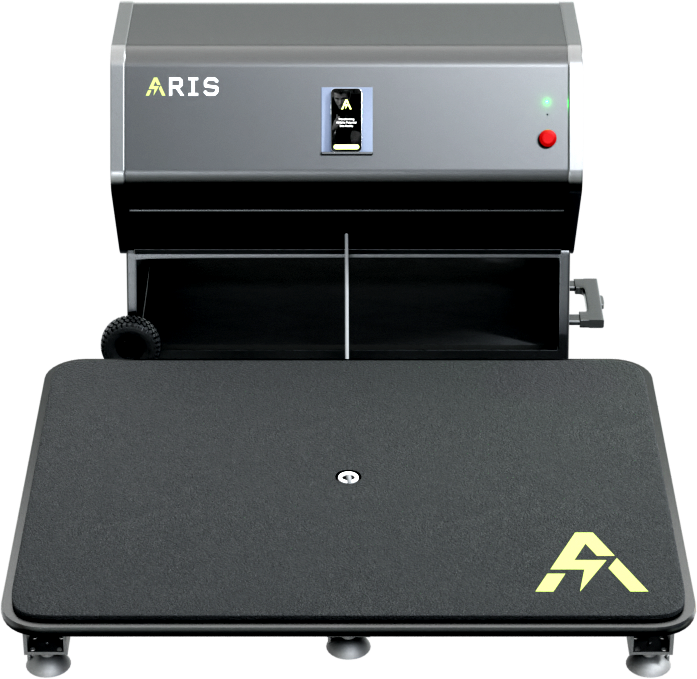How to Run Faster in Football with 6 Football Training Drills
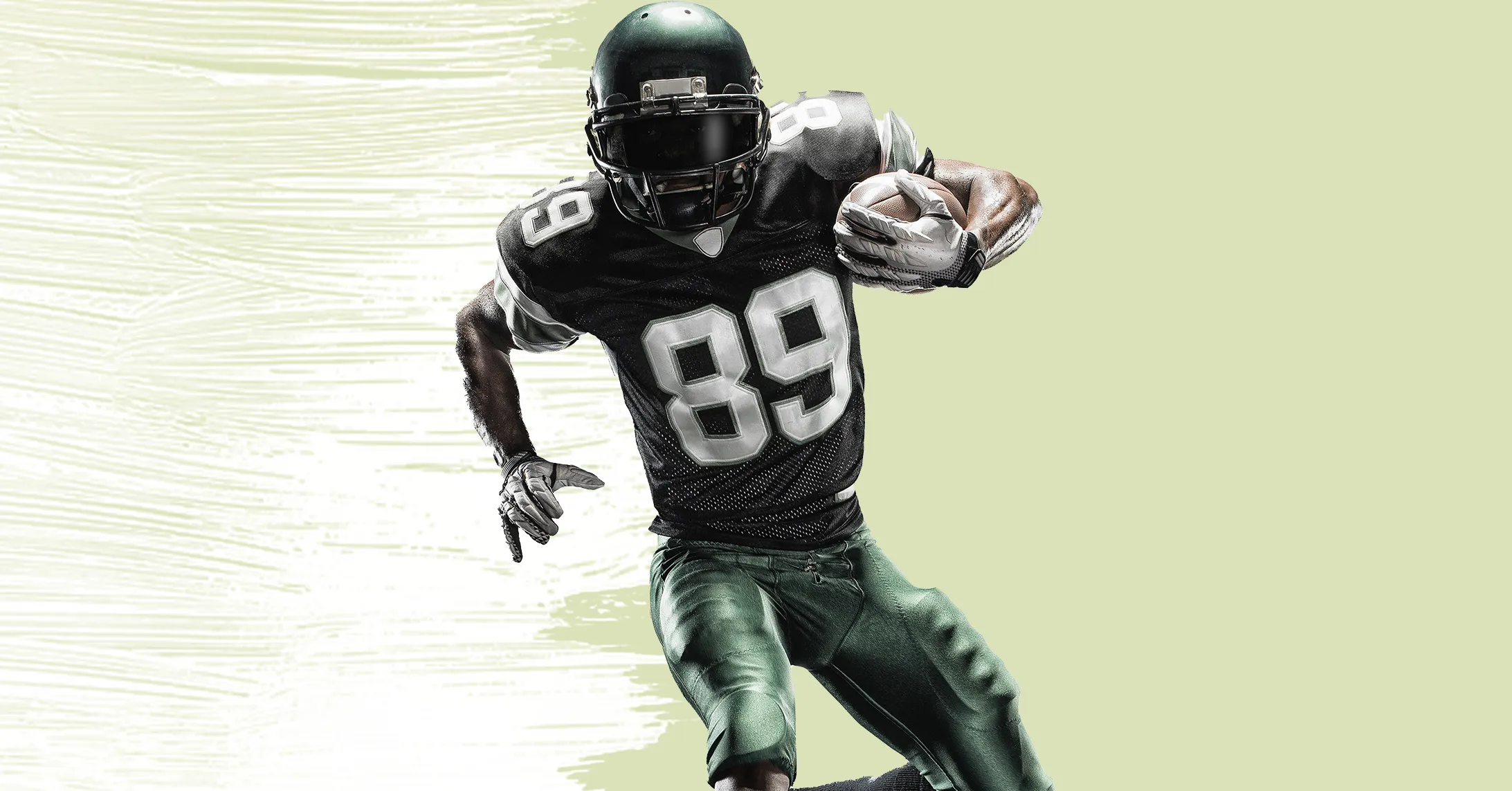
Boost your game with our guide on how to get faster at running in football. Unleash speed and agility with six key training drills!
Ever wondered why some football players seem to have a turbo button while you’re stuck on regular speed? Ever felt like no matter how hard you train, they always seem one step ahead?
We’ve all been there. The great thing is, this isn’t about having a natural knack – it’s all down to learning the right techniques and honing your skills.
In the world of football, speed kills. Speed is the deciding factor when it comes to success in football – a split second can make or break your game. But here’s the thing, getting faster isn’t just about raw sprinting power.
You need agility drills for swift direction changes; strength exercises to help propel yourself forward with more force; and endurance workouts so that even at minute 90, you’re still running like it’s kick-off time.
Get ready for a thrill ride! We’re diving into six potent drills crafted to supercharge your speed. Hold on tight!
Table Of Contents:
- How to Run Faster in Football with 6 Football Training Drills
- How to Get Faster at Running In Football
- Max Velocity Running
- Shuttle Runs
- Lateral High Step
- Backward Lunges
- ArisPro Box Jumps
- ArisPro Resistance Running
- FAQs in Relation to How to Get Faster at Running in Football
- Conclusion
For optimal football performance, try these six drills that target both speed and agility. Each one is designed not just for raw speed but also agility and quick direction changes – key elements of top-tier football performance.
To boost your speed in football, you need a blend of strength training and sprint drills. A solid base of strength helps with explosive power while specific running workouts hone your acceleration.

Research shows that plyometric exercises improve leg muscle power, leading to more speed on the field. So get those box jumps going.
The ArisPro Speed Ladder Drill, for example, works wonders for agility and quick footwork – key elements in becoming faster.
- Place a ladder or cones about 1 foot apart.
- Sprint through them as quickly as possible while maintaining control.
- Focusing on fast knee lifts will help enhance speed over time.
You’ll want to work not only on short sprints, but longer sprints as well – they’re crucial for building stamina and maintaining high speeds during games. For these drills, try sprinting the length of the field multiple times with short recovery breaks between runs.
Mix up your routine by incorporating resistance bands into some runs too. They make muscles work harder which leads to greater gains when you take them off. Trust me; I’ve seen it transform players’ performance first-hand.
Max Velocity Running
The quest to get faster at running in football often leads us to the realm of max velocity training. Max velocity is your top speed, the fastest you can possibly run.
It’s like flooring the gas pedal on a sports car – there’s a limit, but pushing that limit can lead to some exhilarating results. But it’s not all about raw power and speed; technique matters too.
To improve your max velocity, we need an action plan: build strength, work on running form and do targeted drills.
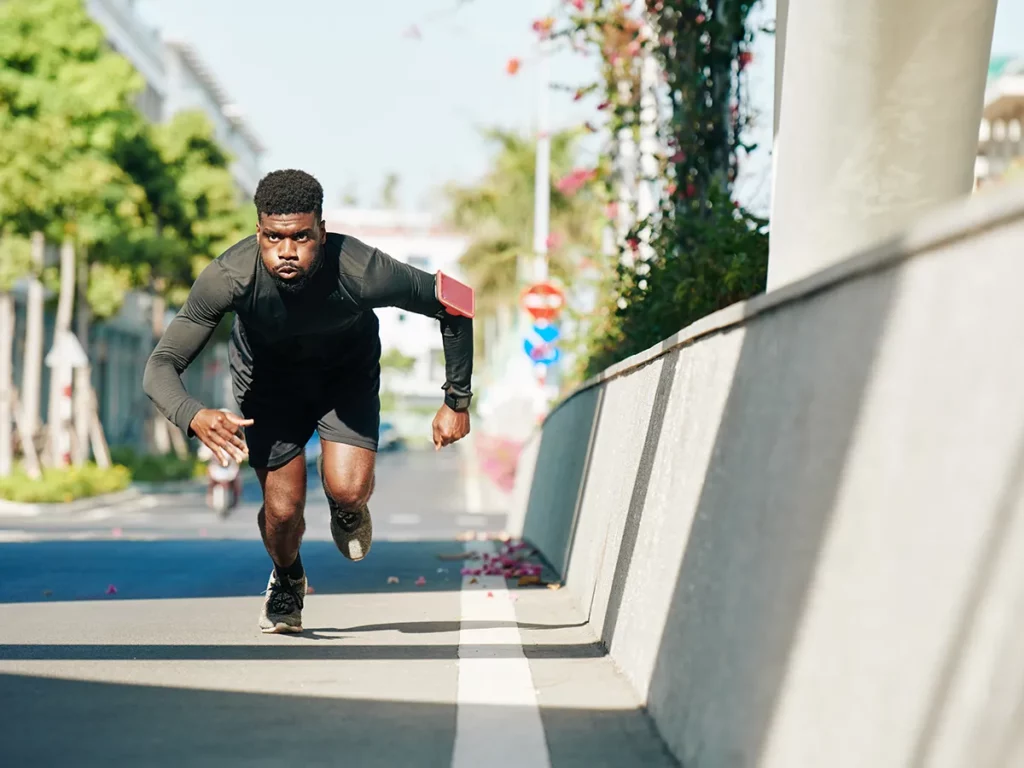
- Build Strength: A stronger body generates more force which helps increase speed. Squats and deadlifts can be tremendous for enhancing lower body power.
- Sprinting Form: Your form when you’re going full tilt matters immensely because poor form slows you down. Arm swing synchronization with leg stride makes sure every bit of energy propels you forward efficiently.
- Targeted Drills: Plyometric exercises help train explosive power necessary for reaching high speeds quickly such as ArisPro Box Jumps.
Incorporating these strategies will allow any athlete to enhance their max velocity running ability over time. It won’t be easy, but remember – Rome wasn’t built in a day.
Shuttle Runs
Speed training is essential in football, but agility and the ability to accelerate quickly while changing direction are equally important. You also need to be quick off the mark and agile enough to change direction rapidly. That’s where shuttle runs come into play.
This drill can help you get faster at running by improving your acceleration, deceleration, and directional changes. Picture yourself on the field – you’re dodging opponents left and right while maintaining control of the ball. It feels like dancing with chaos itself.
The basics of a shuttle run are simple: sprint to a marker or cone set out ahead of you, then turn around and sprint back to your starting point as fast as possible.
- You start from a standing position.
- Sprint forward 10 yards (or meters).
- Pivot quickly and dash back towards the start line.
This high-intensity interval training improves both cardiovascular fitness and leg strength – essential for that burst speed when evading an opponent’s tackle on game day. And remember – practice makes perfect. Consistent effort will make sure those shuttles pay off big time.
Lateral High Step
The Lateral High Step is a crucial drill for getting faster in football. This exercise targets the hips, glutes, and quads – all key muscles to build explosive speed.
Start with your feet shoulder-width apart and hands at chest level. Explode laterally off one foot, driving the opposite knee up towards your chest. Land softly on the balls of your feet before repeating on the other side.
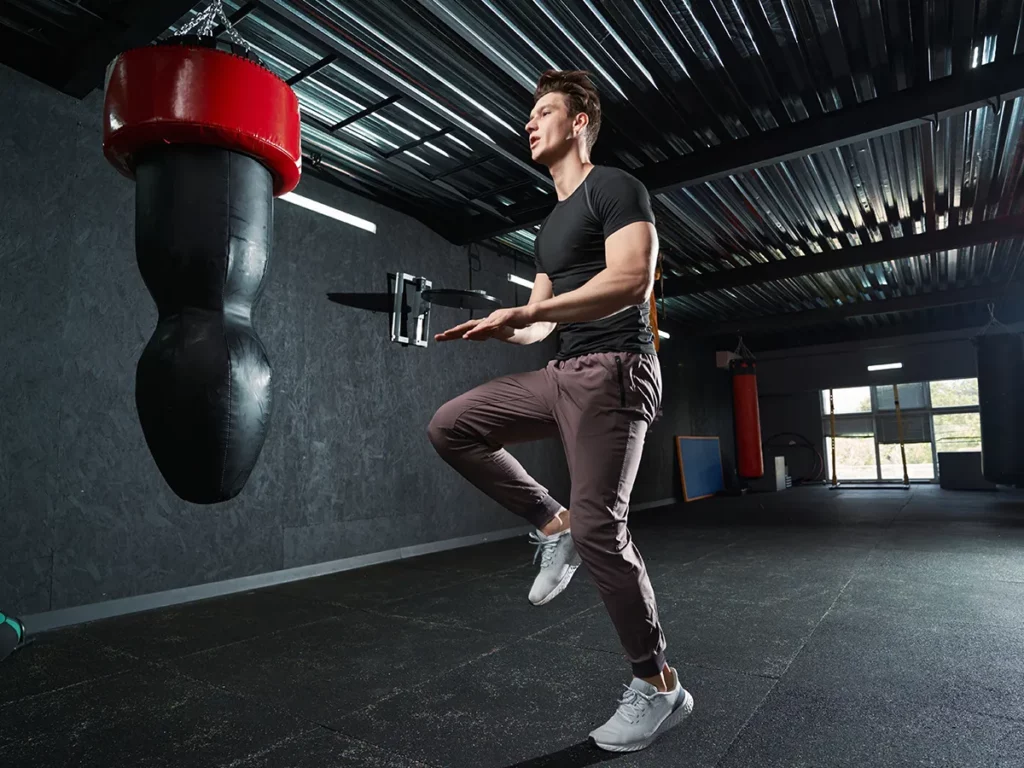
This isn’t just about hopping side-to-side though. Focus on maintaining balance as you land and keep a fast tempo throughout – this will help boost both agility and speed. Though it may feel like a dance, trust me, the results are worth the effort.
Here’s an example of how pros use this drill to improve their performance on-field.
- To make sure each rep counts: push hard off from the ground; drive that knee high; maintain good form even when tired.
- You don’t need any fancy equipment – just yourself and some determination.
- I’d suggest doing 3 sets of 10 reps per leg during each workout session.
So give it a shot. The Lateral High Step could be your secret weapon to outpace opponents next season.
Backward Lunges
You may wonder why you’d ever run backward in football. But, hear us out. Backward lunges are a game-changer for speed training.
This drill lets you build explosive strength in your glutes and hamstrings. The key muscles needed to sprint faster on the field.
Start by standing straight with feet shoulder-width apart. Step back with one foot as far as comfortable while bending both knees at a 90-degree angle. Push off your back foot to return to starting position and repeat this movement alternating legs.
This video tutorial can give more guidance if needed.
- Maintain good posture throughout each lunge – chest up, shoulders back.
- Aim for three sets of 10 reps per leg before or after practice sessions.
- Add resistance bands or weights as you progress to increase challenge and results.
Incorporating backward lunges into your routine will help improve power, balance, and agility which all translate directly into better acceleration on the pitch.
ArisPro Box Jumps
Box jumps are a killer move to amp up your speed for football. Why? They target the explosive power you need in those legs.
We’ve seen first-hand how they can transform an athlete’s performance on the field. Jump higher and run faster by developing strength and agility in the lower body with box jumps.
The How-To of Box Jumps
To start off, stand facing a sturdy box or platform. Make sure it’s about knee height – too high could lead to injury.

Bend into a squat position then explode upwards onto the box using both feet. Aim to land softly without banging your knees. Step back down carefully before repeating this exercise.
Making It Count with ArisPro
In our experience, incorporating these exercises regularly has given noticeable results within weeks. But remember, consistency is key here – make them part of your regular training routine for maximum benefits. You’re already hitting gym sessions hard but adding something as simple as box jumps can give that extra edge over competitors because it enhances quick-twitch muscle fibers necessary for rapid accelerations during games, giving you that extra edge.
ArisPro Resistance Running
Want to boost your football speed? ArisPro resistance running can be a game-changer. It’s all about working against forces, like using resistance bands, to improve strength and speed.
This training style isn’t just some fad—it’s backed by science. Studies show that sprinting with added resistance improves acceleration more than traditional sprints do. That means you could potentially outpace the competition on the field.
- Strap on bands or use other forms of resistance while doing your usual runs.
- The extra load makes muscles work harder—this helps them grow stronger and faster over time.
- With consistent practice, you’ll notice an improvement in your overall run times during games.
No magic pill will make you fast overnight. But ArisPro Resistance Running is as close as it gets when it comes to real-world results from scientific principles. So lace up those cleats and let’s hit the ground running.
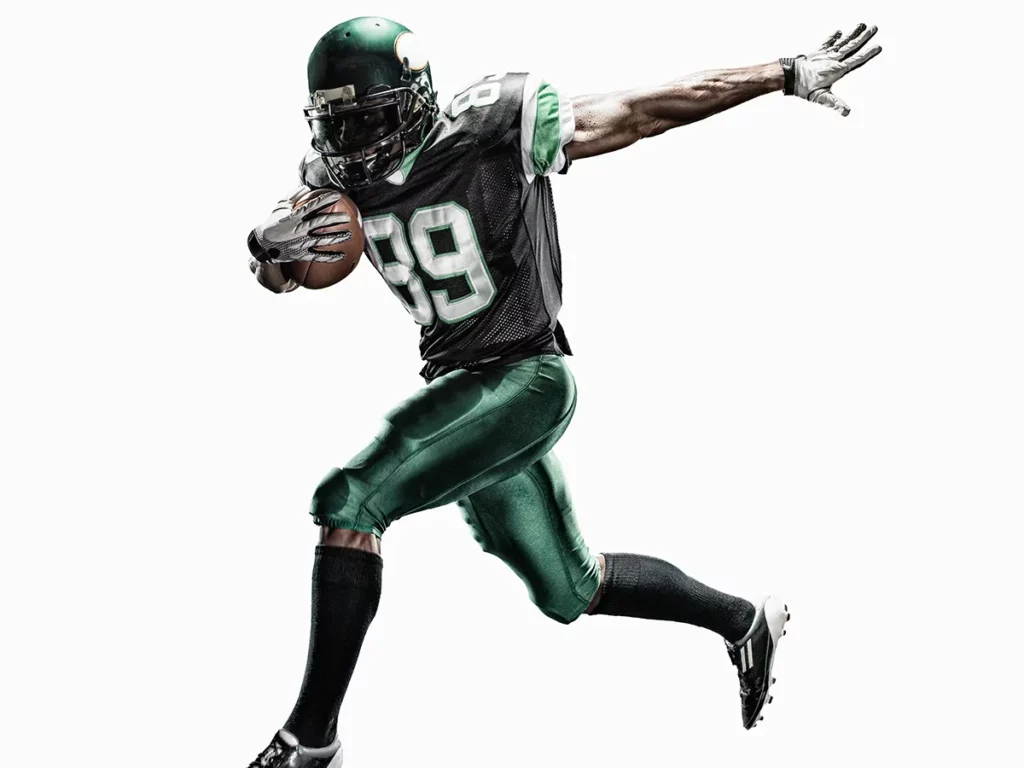
How do I run faster in football?
Speed up your game by practicing high-intensity drills, like max velocity running and shuttle runs. Work on strength training to boost leg power too.
How do you get explosive speed in football?
To explode off the line, focus on plyometric exercises such as box jumps or resistance running. Strength and agility are key for sudden bursts of speed.
How can I increase my running speed?
Increase your stride length through flexibility workouts and improve stride frequency with sprinting exercises. Regular cardio boosts endurance which helps maintain a fast pace.
What exercises improve football speed?
Lateral high steps, backward lunges, ArisPro box jumps, and resistance running are effective ways to build quickness. Remember: consistent practice makes perfect.
Persistence is Key
Running faster in football isn’t just a dream, it’s doable. You’ve got the tools now to crank up your speed game.
The secret? Max velocity running for pure speed; shuttle runs and lateral high steps for agility; backward lunges and ArisPro box jumps for strength. And let’s not forget ArisPro resistance running to build endurance.
Remember: these drills aren’t quick fixes but they are proven techniques on how to get faster at running in football.
Persistence is key here! Make each training session count, focus on technique, and watch as you leave your opponents trailing behind you!

